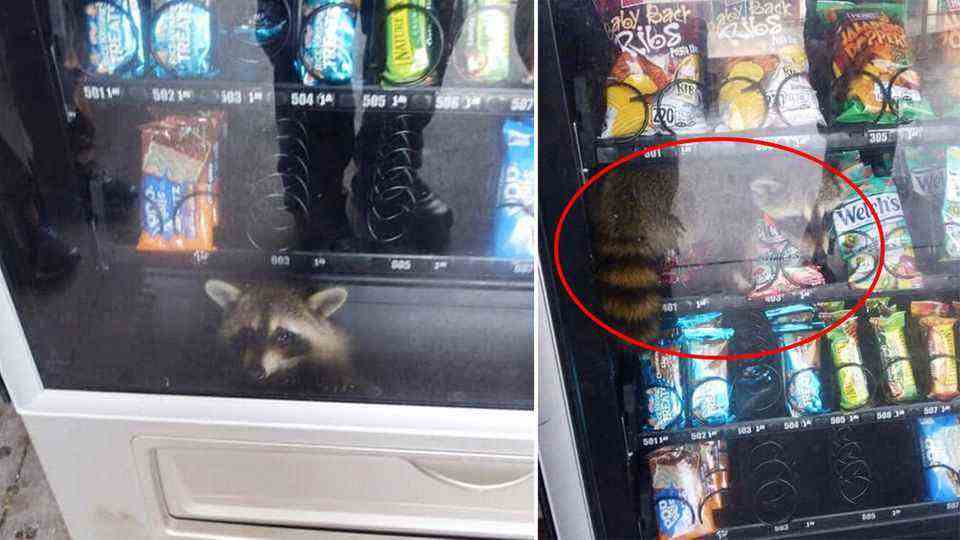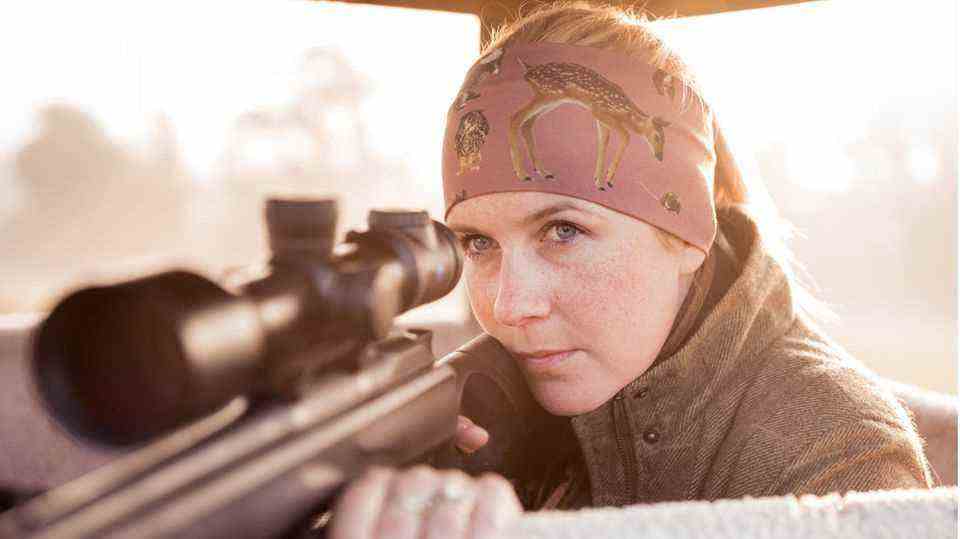“Raccoon Flatshare”
From orphan to Instagram star: Charming raccoon enchants community
Raccoon Fritzi has found a safe home with veterinarian Mathilde Laininger
© Stefanie Loos / AFP
More than 10,000 people follow the life of raccoon Fritzi in the “Raccoon WG” in Berlin-Zehlendorf on Instagram. Fritzi lives with the raccoons Marvin and Paul, the dog Anouk, the two cats Bruno and Miro and the veterinarian Mathilde Laininger.
Faithful eyes, a fine black nose and a lot of charm – Raccoon Fritzi enchants people. The female has been living with veterinarian Mathilde Laininger in Berlin-Zehlendorf since May. Children had found the wild animal and brought it to her when it was only a few weeks old. Together with raccoons Marvin and Paul, dog Anouk and the two cats Bruno and Miro, Fritzi feels very comfortable in her new home.
10,000 people follow the everyday life of raccoon Fritzi on Instagram
The vet shares the animal-fun everyday life of the “Raccoon WG” on Instagram. More than 10,000 followers now follow Fritzi’s development and accompany her when she plays, feeds and discovers in the raccoon-proof household. But is it even species-appropriate to keep a raccoon in your home?
No, basically not. However, the veterinarian has a special permit for keeping raccoons, which in turn is subject to strict conditions. If a raccoon is raised with a bottle, he is very trusting towards people, so Laininger in the “BZ”. Raccoons can therefore be tame like cats and absolutely housebroken. Fritzi even uses the litter box. Anyone who sees an orphaned young animal should first wait at least 24 hours – the mother animals are usually foraging for that long.
Raccoons have a bad reputation
However, wild raccoons often do not have a good reputation. Many people associate the animals with devastated garbage dumps and fear that they will nest in attics. “If someone doesn’t secure their attic and garbage can, they shouldn’t blame the animals for using them,” emphasizes the veterinarian.
Raccoons have been considered an invasive species in the EU since 2016, so they can harm ecological diversity. The animals, originally from North America, were brought to Germany for fur farming in the last century and were first released into the wild in 1934 at the North Hessian Edersee. In the meantime, more than 1.3 million animals are said to live here, making the raccoon one of the most common wild predators and, from a nature conservation point of view, poses a considerable risk to biological diversity. Experts fear for the stocks of endangered species such as moor frog, grass snake, yellow-bellied toad or the European pond turtle.
But raccoons are also threatened: The animals may officially be shot by hunters and animals that have been reared cannot be released back into the wild. They are also prey for foxes and wolves. Laininger fights for the protection of the animal species – for this she would like to found the Raccoons Association in Berlin. “There is no evidence that they are decimating terrapins or reducing the Milan,” says Laininger of the “BZ”.

Until then, Fritzi and her friends have found a safe home with the vet. While raccoons in human care can live up to 20 years, their lifespan in the wild is usually limited to a maximum of 2.5 years.
Sources: BZ Berlin, Instagram, NABU


